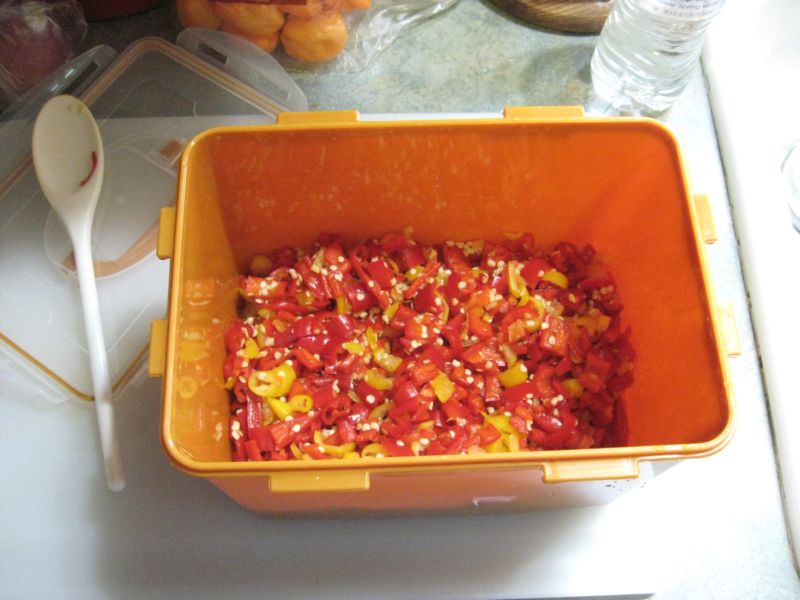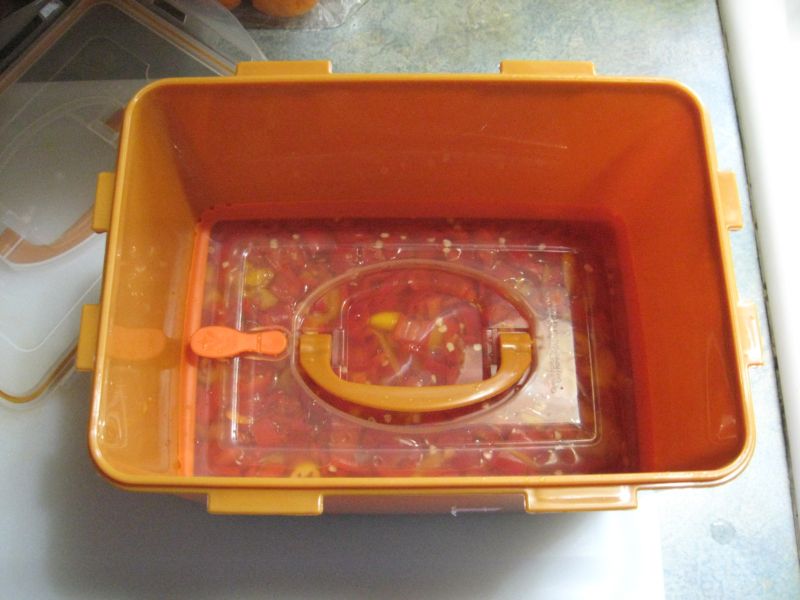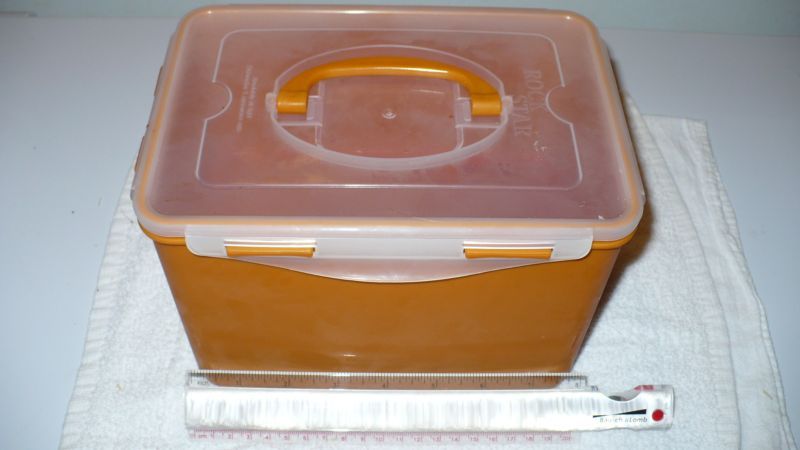I don't ever add any cultures, unless I have another ferment going, then I'll add a couple spoonfuls of the liquid.
Maybe I should try out one of those methods to compare.
But, here's an idea I had while salting up some peppers the other day...
I know some people are interested in doing lower salt ferments. I've also read about people adding fresh vegetables to ongoing ferments, presumably a veg in brine type ferment. Even though it seems problems could pop up with that eventually, as the veg would leach salt out of the brine a little at a time...but, who knows, never tried it.
But it got me thinking, as I was staring at my two pepper ferments. As I pick more peppers, I could grind up and add some more into these. Or I could even prep up a new, similar batch to ferment, and just mix it with the batch that is already chugging along. Sort of like a starter you would use in breadmaking or homebrewing.
Anyone ever try this out?
And then back to the low salt ferments...in my understanding, the problems with too little salt, is that you are allowing too much time for the bad bacteria, that is usually inhibited by the high salt content, to take hold before the good bacteria has a chance to.
So, what if you started a smaller batch, with a decent amount of salt(more than you would normally), and then once fermentation was at its peak, you could add in more fresh ground peppers(without salt). So, in theory, you would end up with a lower total salt content than you would be comfortable using from the start. Assuming that the lacto bacteria are very active, and remain active once you add in the fresh pepper mash.
Just sort of brainstorming for fun...
any thoughts?




